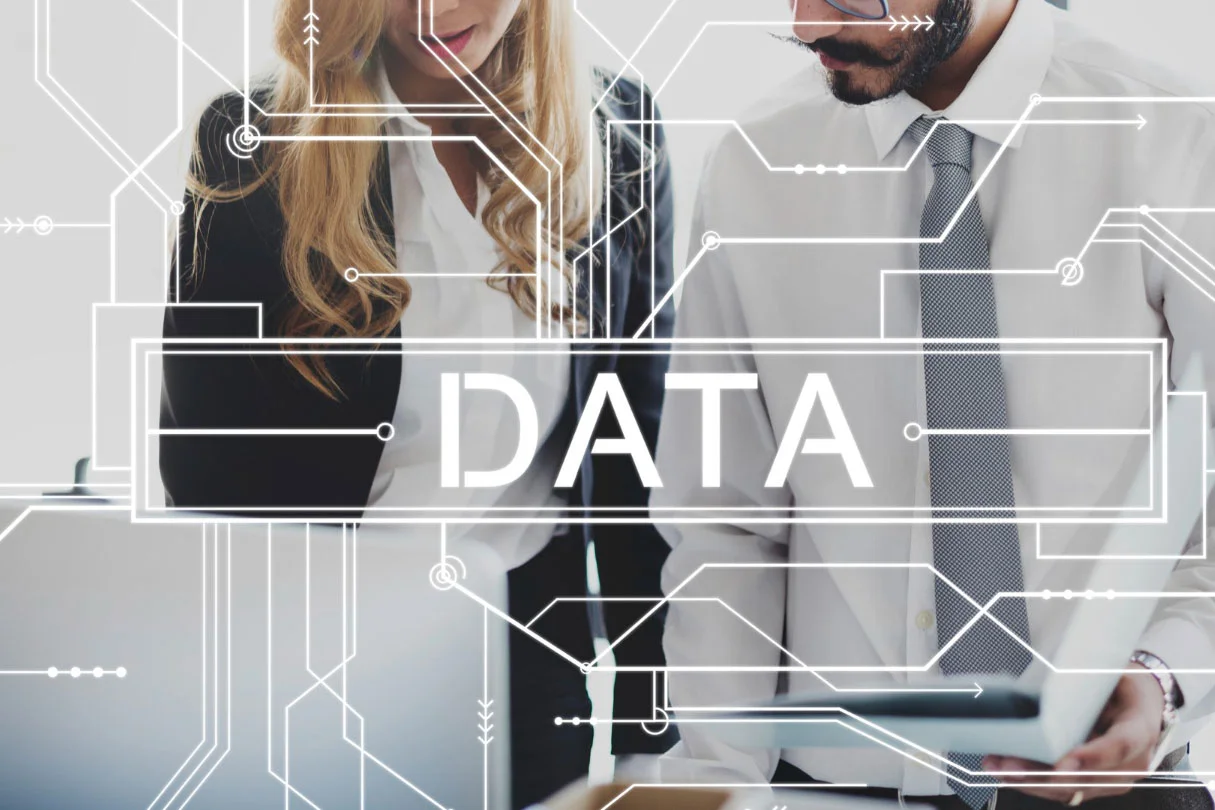Data collection refers to the process of gathering information or measurements from various sources, which can then be analyzed to generate insights. In the context of geospatial solutions, this process often involves collecting location-based data through satellite imagery, UAVs (drones), GPS devices, and remote sensing technologies.
But before diving into how data is collected, it’s important to understand what geospatial data actually is and why it plays such a critical role in decision-making and research. If you’re new to the concept of data, our article “What is Geospatial Data? A Simple Introduction for Beginners” provides a clear foundation to help you understand the basics.
Good data collection is at the heart of geospatial analysis and decision-making. It’s what drives everything; from mapping urban infrastructure to optimizing agricultural practices and managing natural resources. If data isn’t collected in a clear and organized way, there’s a danger of coming to the wrong conclusions, making costly mistakes, or overlooking important details.
In this article, we’ll explore the various ways geospatial data is collected, the types of data sources available, and how professionals across different fields apply these techniques in their work.
Table of Contents
What is Data Collection?

Data collection plays a pivotal role in the broader process of using data to derive insights and make decisions. It is the first and most crucial step in any geospatial data-driven project, setting the stage for all subsequent analysis, interpretation, and decision-making. But why is data collected in the first place?
Think about it: Have you ever made a big decision—like planning a new urban development project or assessing the impact of agricultural practices—only to realize later that the data you relied on was incomplete or inaccurate? In those moments, it’s easy to see just how costly those mistakes can be. Inaccurate geospatial data—such as wrong coordinates or faulty imagery—can lead to poor decisions, misplaced infrastructure, and missed opportunities in critical fields like urban planning, environmental monitoring, or resource management. Without properly collected and reliable geospatial data, there’s nothing solid to base your decisions on. This is why data collection is so essential—it forms the foundation for every subsequent GIS analysis and decision.
Whether you’re conducting research, mapping out an agricultural field for crop health analysis, or planning infrastructure development in a growing city, data collection serves to answer key questions: Where is it happening? Why is it happening? How can we use this information to predict future outcomes or optimize our resources?
No matter the field—be it land-use mapping, transportation planning, or environmental monitoring—this foundational step is key to any methodology. Simply put, without reliable geospatial data, any analysis, predictions, or strategies would lack the substance needed to be effective and meaningful.
Types of Data Collection
Data collection can be broadly categorized into two main types: Primary data collection and secondary data collection. Both types have their unique advantages, applications, and relevance depending on the goals of the research or business project.
Primary Data Collection
Primary data collection refers to original data gathered directly from the source, typically through satellite sensors, UAVs, or GPS devices. This data is crucial for obtaining up-to-date and accurate information about a specific location.
- Example: A company using drones to capture real-time images of a construction site for mapping purposes or a GPS sensor collecting field data for agricultural analysis.
Secondary Data Collection
Secondary data collection refers to data that has already been collected by others for different purposes. This data is often readily available and can be used for various research or business needs. This data is used for broader analysis or to complement primary data.
- Example: Using historical satellite imagery to assess land use changes over the past decades or integrating government census data into GIS systems to understand population distribution patterns.
Key Data Collection Methods in GIS
When it comes to geospatial solutions, the following methods are commonly used to collect accurate and reliable data:
1. Satellite Imagery
Satellites capture high-resolution images of the Earth’s surface and provide valuable data about land cover, vegetation, and urban development. These images are processed and analyzed within GIS systems to gain insights into spatial trends.
2. UAV Data Collection
UAVs, or drones, are equipped with high-precision cameras and sensors that capture detailed geospatial data. Drones are commonly used for collecting data on specific sites, like construction areas or agriculture fields, and offer flexibility in data collection by accessing remote or hard-to-reach locations.
3. Remote Sensing
Remote sensing involves capturing data from a distance, often using satellites, airplanes, or drones equipped with sensors. It allows for monitoring environmental changes, urban sprawl, and other dynamic processes.
4. GPS Data Collection
GPS devices collect precise location data, which is essential for mapping and analyzing geographic features. Whether it’s for urban planning, transportation management, or environmental studies, GPS ensures high accuracy in spatial data.
Data Collection Methods – Qualitative vs. Quantitative
In the context of geospatial data, choosing the right data collection method is crucial for obtaining reliable, actionable insights. Geospatial data collection methods are generally categorized into qualitative and quantitative approaches, with each having its specific uses and advantages.

Qualitative Data Collection Methods in GIS
Qualitative methods in GIS are used to gather descriptive data that provides deeper insights into spatial features and phenomena. This approach often involves non-numerical data, such as land use classifications, vegetation types, or environmental conditions, which are analyzed to understand patterns and relationships in the landscape.
For instance, remote sensing techniques might be used to classify land cover, distinguishing between forests, urban areas, and water bodies. These qualitative assessments are typically used in urban planning, environmental studies, and conservation efforts to provide context or to guide further, more detailed quantitative analysis.
Characteristics:
- Data is often textual, categorical, or visual (e.g., maps or imagery).
- Focuses on understanding spatial patterns, landscape features, and environmental processes.
- Results provide contextual insights, often used as a foundation for quantitative modeling.
Common Methods:
- Remote Sensing: Analyzing satellite or drone imagery to assess vegetation, urban growth, or environmental conditions.
- Field Observations: Collecting data on-site to evaluate land use or habitat types, which may be used to supplement GIS data.
- Mapping and Classification: Defining land use types or zoning information in urban areas.
Quantitative Data Collection Methods in GIS
On the other hand, quantitative data collection focuses on gathering numerical data that can be analyzed statistically and used for spatial analysis and modeling. Quantitative data in GIS is critical for tasks that require precise measurements or pattern identification, such as elevation, area, or distance.
For example, GPS devices or LiDAR technologies are often used to collect precise spatial measurements, such as building heights, road lengths, or terrain elevation. This data is essential for creating accurate 3D models, topographic maps, or for conducting spatial statistical analysis.
Characteristics:
- Data is numeric and can be used to perform spatial calculations and modeling.
- Provides measurable insights into spatial relationships (e.g., distance, elevation, area).
- Results are used for predictive modeling, resource allocation, and planning.
Common Methods:
- GPS Data Collection: Gathering precise location data, such as the positioning of infrastructure, roads, or utility networks.
- LiDAR: Using laser scanning to measure precise distances and elevations, useful for topographic mapping, flood modeling, and forestry.
- Satellite Imagery: Analyzing pixel data to measure changes in land cover, population density, or infrastructure development.
Choosing the Right Method; Qualitative or Quantitative
The choice between qualitative and quantitative methods in geospatial data collection depends largely on the research question and the type of analysis required. Qualitative methods are ideal when the goal is to understand the context, patterns, and relationships in geospatial data, especially when exploring subjective or complex phenomena like land use, environmental changes, or urban dynamics. These methods help provide a rich, descriptive understanding of spatial features and their interaction with the surrounding environment.
On the other hand, quantitative methods are better suited for projects that require measuring specific variables or spatial relationships, such as elevation, distance, or area. Quantitative data is essential when testing hypotheses, comparing large-scale datasets, or analyzing spatial trends across larger regions. GPS data, LiDAR, and satellite imagery are often employed for these types of precise, numeric measurements in geospatial analysis.
In some cases, professionals may choose a mixed-methods approach, combining both qualitative and quantitative methods to provide a more comprehensive understanding of a geospatial issue. For example, a study might begin with qualitative field observations or remote sensing imagery analysis to gain insight into land cover changes, followed by quantitative measurements using GIS tools to analyze specific trends, like population density or infrastructure growth in urban areas.
Key Steps in a Geospatial Data Collection Process
When collecting geospatial data, professionals follow a systematic approach to ensure the accuracy, reliability, and relevance of the data. Here’s an overview of the key steps involved:

1. Define the Objective
The first step is to clearly define the purpose of geospatial data collection. This involves identifying the research questions or business goals that the data is intended to address – such as assessing land use, mapping urban development, or monitoring environmental conditions. Clear objectives guide the entire process, ensuring that data collection is focused and relevant.
2. Choose the Data Collection Method
Based on the objectives, decide on the most appropriate method for collecting the geospatial data. This could involve using primary data collection methods (e.g., satellite imagery, UAVs, GPS devices) or secondary data (e.g., existing geospatial datasets, maps, or publicly available data). The method selected will determine the tools, technologies, and techniques used throughout the data collection phase.
3. Develop a Data Collection Plan
This step involves designing the logistics of the collection process. A detailed plan specifies how data will be gathered (e.g., using drone flights to capture imagery or satellite sensors to gather environmental data), the timeframe for collection, who will be responsible, and how the data will be recorded. This plan ensures that the process runs smoothly and efficiently.
4. Collect the Data
With the plan in place, data collection begins.Whether through drones, satellites, ground-based GPS sensors, or other remote sensing tools, the data is gathered according to the predefined methodology. It is important to maintain consistency and minimize errors during this phase.
5. Monitor and Validate Data
As geospatial data is being collected, continuous monitoring is essential to ensure that the data is accurate and complete. This includes checking for errors, inconsistencies, or missing data points. Validation techniques may include cross-checking with secondary data or using multiple data sources to confirm findings.
6. Process and Analyze the Data
Once data is collected, it must be organized, cleaned, and analyzed using specialized software, such as GIS tools for spatial analysis. Data processing might involve cleaning the raw data (e.g., removing noise from satellite imagery) and transforming it into useful formats, such as maps, 3D models, or heatmaps. The analysis phase can include tasks like identifying spatial patterns, calculating distances, or predicting trends in the data.
7. Make Informed Decisions
The insights derived from the geospatial data are used to guide decision-making processes in urban planning, resource management, environmental protection, and more. By visualizing and interpreting the collected data, businesses, governments, and researchers can make informed decisions that drive positive outcomes—such as optimizing land use, improving infrastructure, or protecting natural resources.
Challenges in Data Collection
While geospatial data collection provides invaluable insights across industries like urban planning, agriculture, and environmental monitoring, it comes with a range of challenges that can impact data accuracy and reliability. Understanding and addressing these challenges is essential to ensure that geospatial data is useful and actionable.
1. Data Accuracy and Precision
Geospatial data collection often requires high levels of accuracy, especially when dealing with satellite imagery, UAVs, or GPS sensors. Small errors can lead to significant discrepancies in analysis, especially when the data is used for decision-making. For example, in urban planning, inaccurate location data can result in the misplacement of infrastructure or miscalculation of available land, which can lead to inefficiencies or costly mistakes.
Solution: To improve accuracy, it’s important to use advanced calibration techniques, ensure GPS devices are up to date, and employ differential correction methods to eliminate errors in spatial data collection.
2. Technological Limitations
Geospatial data collection is heavily reliant on advanced technologies such as satellite sensors, drones, and remote sensing tools. However, these technologies come with their own limitations, including high costs, limited coverage areas, and resolution constraints. For instance, satellite imagery may have limited resolution or may not capture certain surface details, such as small infrastructure or vegetation changes, which could be critical for specific projects.
Solution: Combining multiple data sources, such as UAV data for high-resolution mapping and satellite imagery for broader coverage, can help overcome these limitations. Additionally, integrating cloud-based GIS tools can enable better access to and processing of vast geospatial datasets.
3. Environmental Conditions
Environmental factors, such as cloud cover, weather conditions, or terrain, can significantly affect the quality of data collected by remote sensing tools. For example, satellite images can be obscured by cloud cover, and drones may struggle to collect reliable data in windy or stormy conditions. Similarly, topography in rugged or remote areas can present challenges for data collection, particularly when using UAVs or ground-based sensors to map large, inaccessible regions.
Solution: Data validation from alternative sources, such as ground-truthing or using data from multiple collection times, can help verify the accuracy of geospatial data when environmental conditions interfere with data capture. Selecting the right time of year or season for data collection can also minimize the impact of weather conditions.
4. Interoperability and Integration of Data
Geospatial data often comes from a variety of sources, such as satellite imagery, aerial surveys, field sensors, and public data sets. Integrating data from different platforms, formats, and resolutions can pose challenges, particularly when using older data or when working with non-standardized data formats.
For example, combining LiDAR data with satellite imagery or GPS data can be difficult if the data isn’t standardized or properly aligned, leading to errors when creating accurate 3D models or maps.
Solution: Implementing data standards and interoperable formats, like GeoJSON or KML, as well as using advanced data processing and geospatial analysis software (such as GIS platforms) to harmonize datasets, can help resolve these issues.
5. Cost and Resource Constraints
High-resolution geospatial data collection often requires significant investment in equipment, software, and expertise. For instance, UAVs equipped with specialized sensors or satellite data can be expensive, particularly for large-scale or long-term projects.
Solution: To mitigate costs, data-sharing initiatives, cloud-based GIS solutions, and the use of open-source geospatial platforms can make geospatial data more accessible and reduce the financial burden of purchasing and maintaining expensive equipment.
6. Ethical and Privacy Concerns
Geospatial data collection, especially when it involves personal location data or sensitive environmental information, raises important ethical and privacy issues. Ensuring that individual privacy is respected, especially in urban monitoring or mobile data collection, is critical.
Solution: Compliance with data protection regulations (such as GDPR or CCPA) is essential. Implementing anonymization techniques for data and ensuring informed consent for data collection can help protect privacy while still gathering valuable insights.
Embracing Modern Geospatial Data Collection Solutions
With advances in UAVs, satellite technology, and IoT-enabled sensors, the way we collect geospatial data is evolving rapidly. These modern tools enhance data accuracy, scalability, and real-time capabilities. As businesses and researchers continue to explore new methods for geospatial data collection, it’s crucial to embrace these innovations to stay ahead in a data-driven world.





